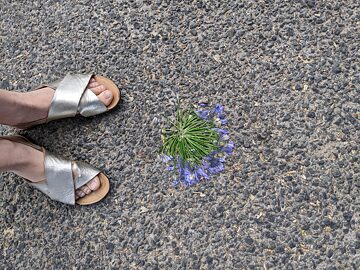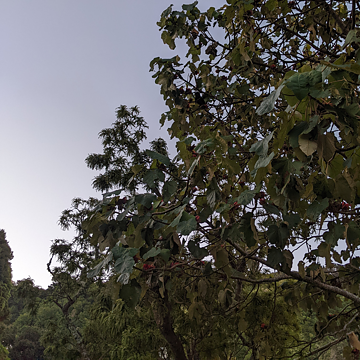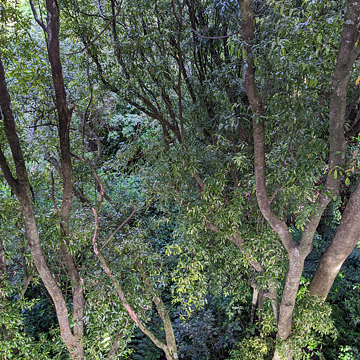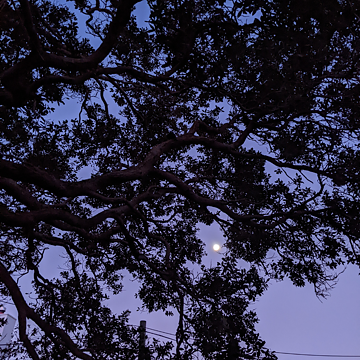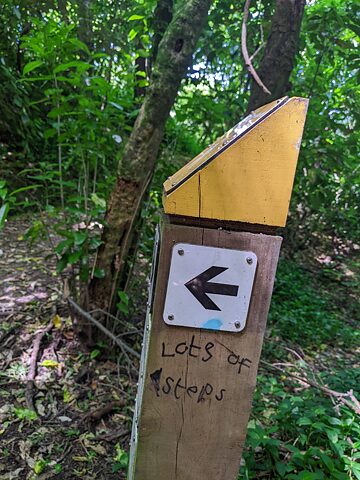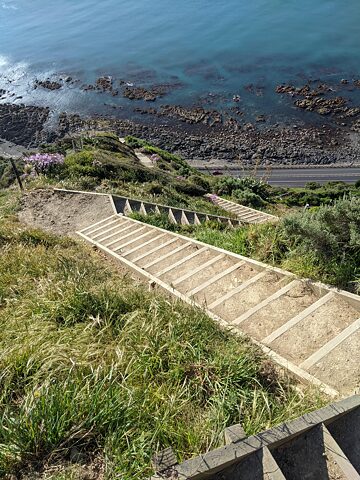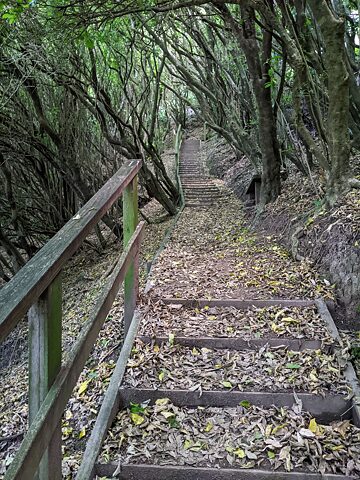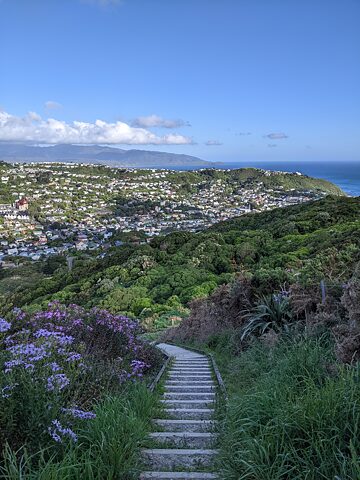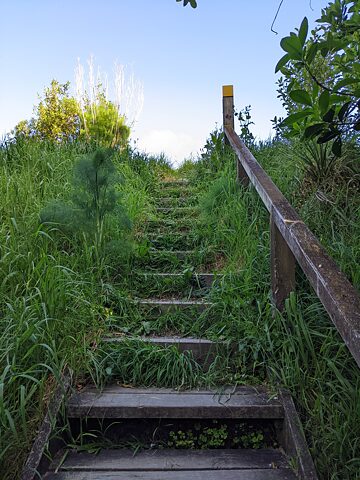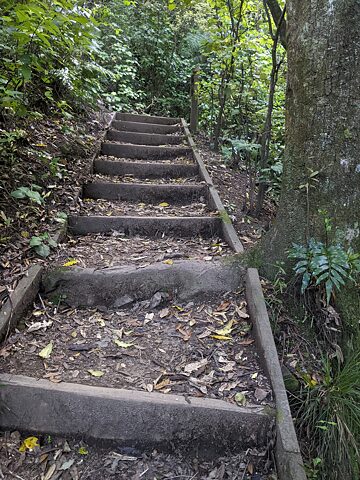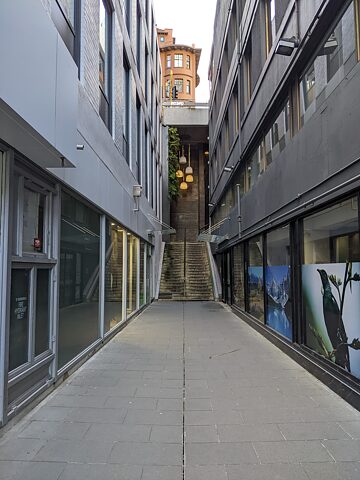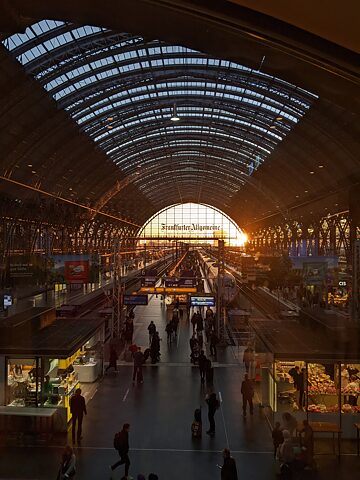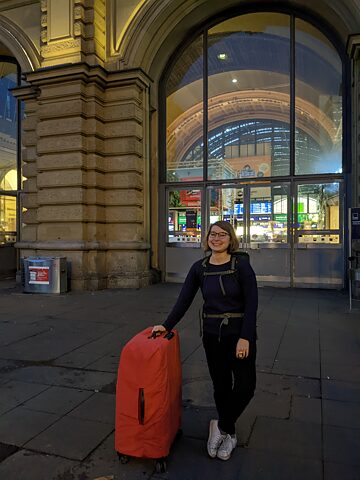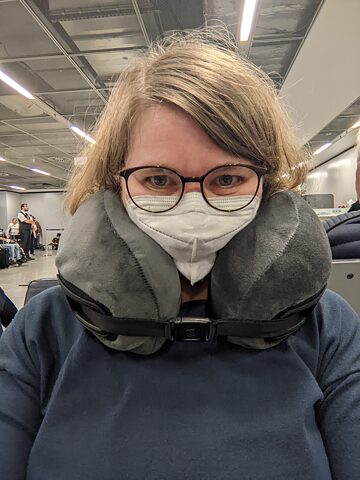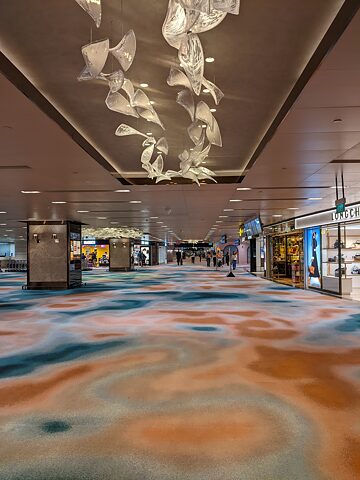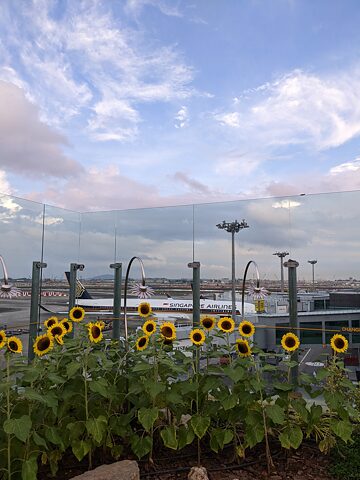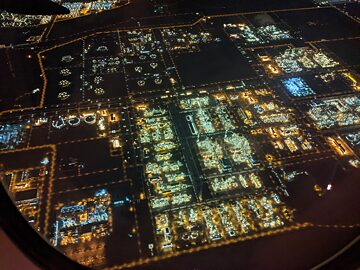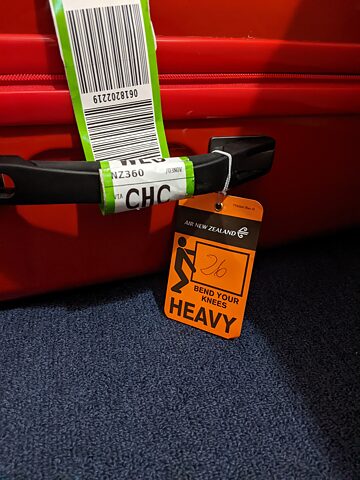Artist Residency 2022
Resident Artist Diary
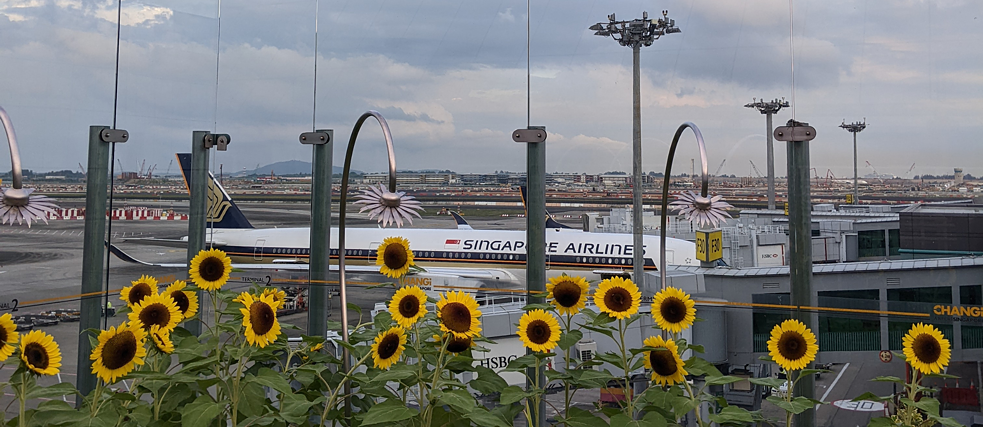
Clara Ehrenwerth was 20202 an artist in residence at the Goethe-Institut Wellington. Here she reports on her impressions in Wellington and elsewhere.
PART 4: I GUESS THIS IS GOODBYE
It's the third day of the new year and I'm sitting in sandals at Auckland Airport, preparing to fly back to the German winter. In front of me is the runway, behind me are nine weeks on the other side of the world, which very quickly no longer felt a bit like the other side of the world.
Although I really don't know anything about logistics, it's easier for me to understand and summarize the busy shuffling around on the airport apron than the last sixty days. So many new impressions, thoughts, encounters.
I have earworms from the songs of the Tūī in the Botanical Garden, the cawing of the Kākā and from the many bird sounds that I still can't identify. I have earworms from the electronic self-checkout voice in the supermarket: "Quantity needed", "Please place item in the bagging area", "Thank you for shopping at Countdown". I've had an earworm of "Purea Nei" for days and have tried to find a recording of it, but nothing on the internet even comes close to the versions sung somewhere together by everyone who happens to be there - before a reading, at a party, in the evening sun. (As I write this, of course, the melody is already settling back into my ear).
I've walked the City to Sea Walkway and the Escarpment Track, been to Otari Wilton's Bush and Zealandia and the Zoo, and the Eastern and the Southern and the Northern Walkway (Western Walkway, where are you anyway?). I stood in the sunset at Princess Beach, I stood in the sunset at Island Bay, and at the Atatürk Memorial, and at Mount Kakau. I think I'm allowed to say now: I can't think of a city more beautifully set in the landscape than Wellington (possibly not even an imaginary one).
When I wasn't walking, I held my snapper card up to the scanners on the buses, full of imaginary native pride - incredulous that a local transport ticket in Aotearoa currently costs about a sixth of a German ticket. Nevertheless, for the first time in my life, I regretted not having a driving licence, because you can hardly get anywhere outside the capital without a car. And, confession: I didn't understand the waste system until the very end (although waste separation is also the first duty of citizens in Germany) - where is the compost? Washing out plastic packaging? And why do you put the rubbish in bags on the street in the windiest city in the world?
Luckily, the airport in Auckland is better organised than my thoughts. Now, for example, boarding is called for the flight to Singapore. I'm afraid I'll have to get there pretty soon.
Okay, I admit it: I'm also looking forward a little to the boredom, the ordinary, the everyday. After all the impressions that have poured in on me for weeks, I actually have a bit of a longing to look at the white wall behind my desk again, day in and day out - in my office on the other side of the world.
Goodbye, Aotearoa! Farewell, Wellington! See you soon, sometime.
PART 3: A VERY DIFFERENT TUNE
I stood rooted to the spot. What was that? Was there someone whistling? Right above me?
I was, admittedly, quite overtired, having arrived in Wellington only a few hours ago. Through the veil of my tiredness, everything seemed a bit unreal on my first New Zealand walk anyway. The infinitely tall trees in the Botanic Garden. The palm trees in the wind. Bolton Street, which is as steep as a ski jumping ramp. The motorway that runs right through the cemetery. But that sound? Tü-tü-tütü-tü. An evening chant in a minor key, followed by an affirmative click. A melody that - perhaps with some punctuation - could easily be the first five notes of a Bach fugue.
But in fact it was a bird that was both composer and performer here - a tūī, as I later learned on the internet. They also looks a bit like a cocky opera singer with their pompous white tuft of feathers on their neck. Of course, I knew beforehand that Aotearoa has a unique fauna - but I wasn't prepared for that. How different an evening, a morning feels when the birds contribute a different sound.
Over the last few weeks I have learned that every tūī sings their own tune. From my observation, it's actually mostly five notes, but I don't know if this finding is ornithologically tenable. In Wellington, melancholic melodies seem to dominate. When I was in Napier last weekend, the tūī in the pedestrian zone was singing a more cheerful hit. But I guess that goes with the weather.
Since the first day, I've been trying to capture the tūī songs because I know that when I travel back to the German winter in January, they will always remind me of my time in Aotearoa. So if you see someone standing under a tree with one arm stretched far up to record a tūī chant with their cell phone, whistling animatingly, so that the birds join in: that's me.
(I have not yet managed to take a photo of a recognisable tūī. Therefore, here are some pictures of trees where tūī are hidden – for sure!)
PART 2: NEXT LEVEL
In the last fortnight I have climbed up and down more stairs than ever before in my life. In my home town of Leipzig there is only one hill, the Fockeberg. It is not a natural hill, but was created after World War II. The rubble of the many buildings destroyed by the bombs was gathered from all over the city and piled up to form this huge, almost 40-metre-high heap. Today it is overgrown with trees and meadows and a very popular place to watch the fireworks over the city on New Year's Eve.
In Wellington I now overcome many differences in altitude every day. Whether I'm going grocery shopping or on a hike, there's always a stairway to climb to the next level. The Escarpment Track on the Kāpiti Coast has 1,200 steps over ten kilometres, and the City to Sea Walkway certainly not much less. Some lead to stunning views over the city, others straight into the wilderness. In Ōtari-Wilton’s Bush you can even climb a stair in which a tree root has simply been converted into a step. How practical!
I'm not completely sure, but I'd say I've discovered all the stairways connecting Lambdon Quay to The Terrace by now. My favourite is Masons Lane, because I'm kind of touched that somebody cared to spruce up this rather dark and dank staircase by the addition of some living room-style lamps. I walk down its 72 steps, only to walk back up to my initial level a few doors down inside the gym. I really can’t see a reason to work out on a stepmill in this city.
Now I have to leave - there are still a lot of stairs in the city that want to be discovered by me...
PART 1: AS WE FLY INTO THE DAYBREAK
A fortnight ago today, I set off. I loaded a suitcase (which I had borrowed from my mother because I don't own a suitcase that big) with 26 kilos of luggage, and the backpack I always take with me for hiking in the Austrian Alps with another 8.5 kilos. The biggest challenge of the whole trip was to manoeuvre the suitcase from the fourth floor through the staircase down to the street. Compared to that, the remaining 20,000 kilometres were a piece of cake.Step 1: A three-hour trainride from my hometown Leipzig to Frankfurt Airport.
Step 2: A twelve-hour nightflight from Frankfurt to Singapore.
The following day was the shortest day of my life. I had breakfast on the plane at around 9 am, and when we landed in Singapore shortly afterwards, it was almost evening. I brushed my teeth in a very clean airport bathroom with huge mirrors. I developed an obsession with the many different carpets that line Changi Airport. And (thanks to my new obsession) I even managed to walk around the terminals so extensively that my pedometer app sent a satisfied push message.
Step 3: Another ten-hour nightflight from Singapore to Christchurch.
Less than five hours had passed since my breakfast, when bedtime was called again. "Please close the blinds," the steward said, "as we fly into the daybreak." The day that dawned, while I spent sleepless hours watching „I’m a cyborg but that’s okay“ and doing crossword puzzles, was my arrival day.
All I had left to do was to get through Step 4: Flying from Christchurch to Wellington in bumpy fifty minutes. A very windy welcome.
When I arrived at my cottage, 40 hours had passed since I had heaved the suitcase down the staircase in Leipzig (but only 28 hours on the clock). Here I will stay until Christmas, before returning to Germany in January (and getting back my missing twelve hours). The airline guidelines still allow four kilos more luggage. Let‘s see what I‘ll take back with me.
